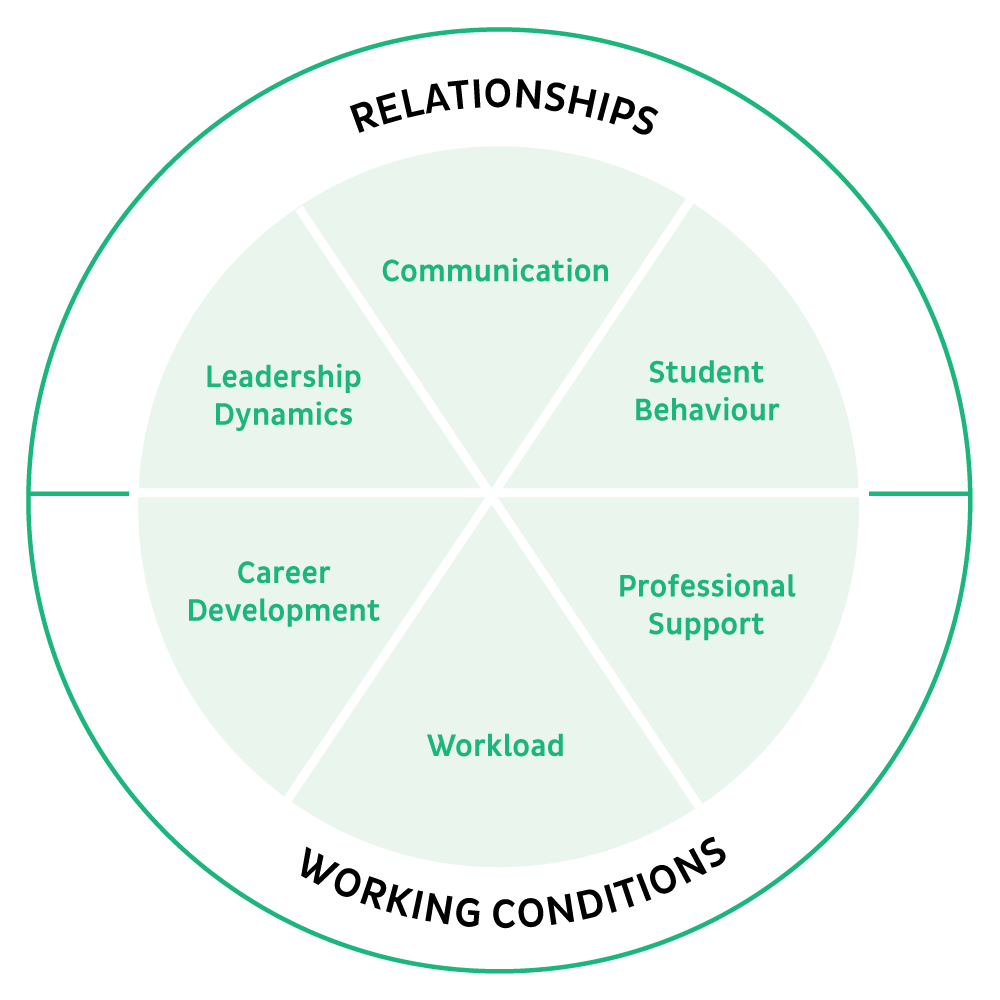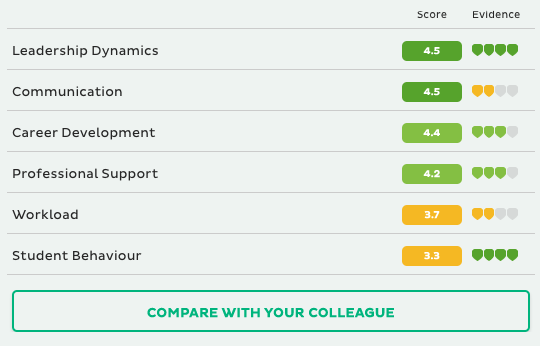Why did we bother to create a tool for self-assessing staff wellbeing — a topic that has been on Head Teachers’ minds forever? What is the difference between self-assessment and simply thinking about a problem?
This blog post will cover 3 ways self-assessment can add value to solving a problem — through adding structure, generating conversation, and identifying gaps in evidence.
1. Self-assessment on your own: Add structure
No one knows your staff better than you do. We certainly don’t. What we can offer, however, is a bit of structure to guide your reflection!
Our work on Staff Wellbeing in schools found that both relationships and working conditions matter for retention and feeling appreciated in schools, so self-assessment on this topic should cover topics such as student behaviour, your work as a leader, as well as staff workload and career development opportunities in your school.

Thinking about each topic separately can add the nuance necessary to translate awareness of a problem (“retention”) to a solution (“more support regarding pupil behavior”).
2. With your Senior Leadership Team: Communicate and share
Once your own view of the problem is structured, you will find it easier to communicate about it and share your thoughts with your team!
Schedule a session to go compare your assessment of the situation with theirs (sharing the self-assessment results beforehand) — pay particular attention to the areas where your conclusions are different!
3. Beyond self-assessment: Other evidence
Of course, self-assessment will always have its limitations, and we want everyone involved to be fully aware of that. To pick up on gaps of evidence, we added a question about it in each section.

Reflect on the evidence you have on the topic, and consider what other data and evidence might be worthwhile investigating. Looking through meeting notes, speaking with your staff, parents, and pupils, doing learning walks, or running a staff survey are all viable ways to look at the situation at greater depth.
In case you are looking to run a staff wellbeing survey in your school or you would simply care to give your feedback on how we can improve the self-assessment tool — looking forward to hearing from you on insights@edurio.com.
No comments.